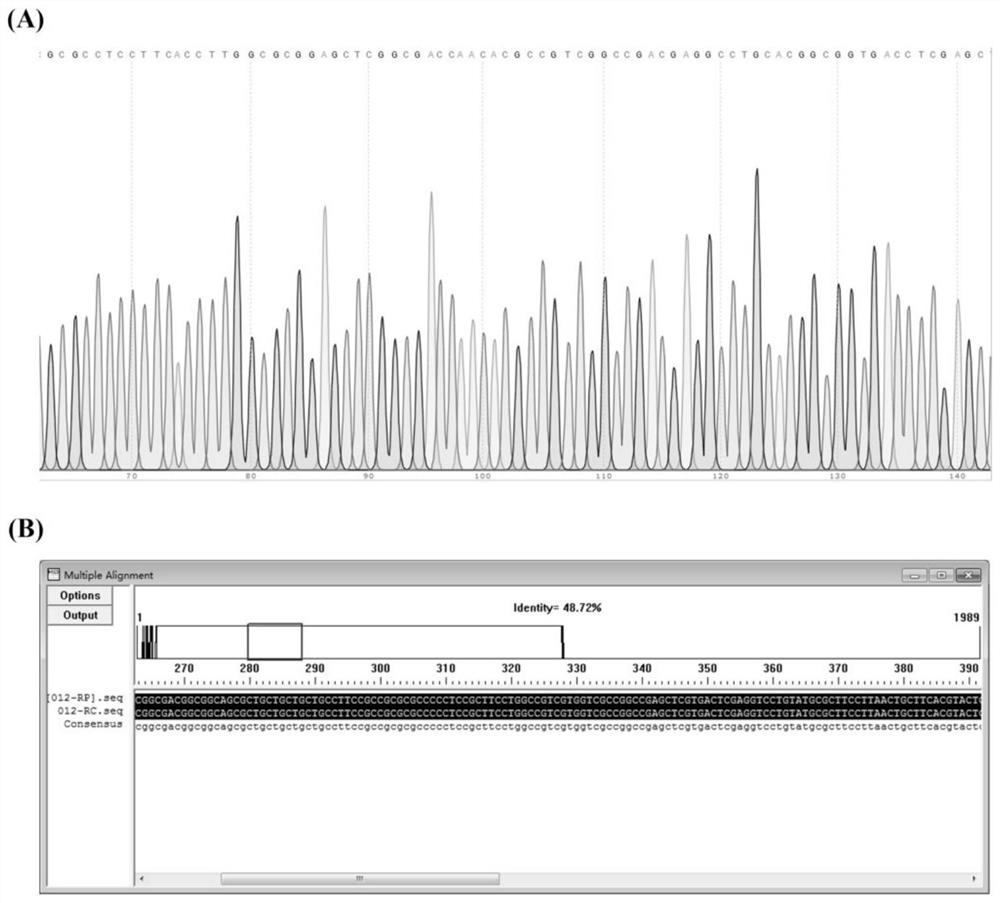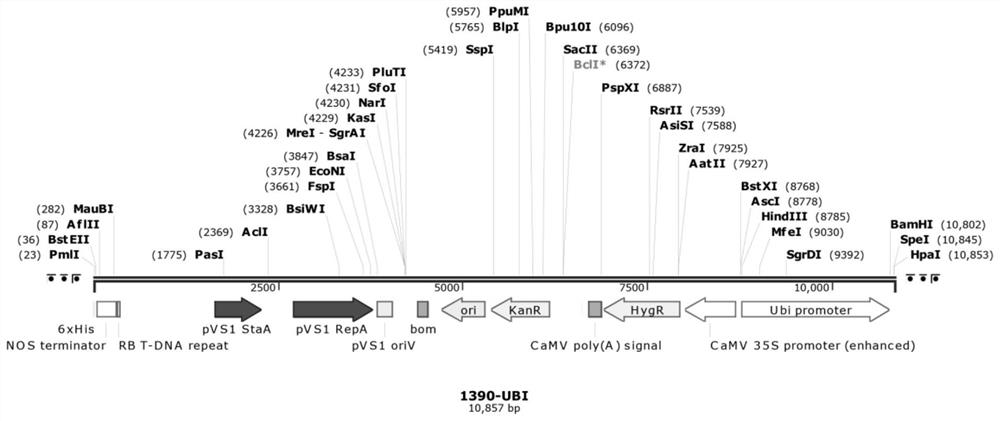Application of zizania sinensis ZlRc gene in increasing procyanidine content of rice seeds
A proanthocyanidin and rice seed technology, applied in the fields of application, genetic engineering, plant gene improvement, etc., can solve the problem of reduced nutritional value and achieve the effect of increasing the content of proanthocyanidin in seeds
- Summary
- Abstract
- Description
- Claims
- Application Information
AI Technical Summary
Problems solved by technology
Method used
Image
Examples
Embodiment 1
[0030] Embodiment 1: the acquisition of ZlRc gene
[0031] 1.1 Extraction of Chinese wild rice total RNA and preparation of cDNA
[0032] (1) Extract total RNA from Chinese wild rice:
[0033] The RNA of Chinese wild rice leaf was extracted by polysaccharide and polyphenol plant RNA extraction kit, and reverse transcribed into cDNA. The RNA extraction of Chinese wild rice leaves was carried out with reference to the instructions of the plant RNA extraction kit, and the specific experimental methods were as follows:
[0034] 1) The rice sample was rapidly ground into powder in liquid nitrogen, weighed 50 mg of liquid ammonia ground sample, added 500 μL Bufer PRL preheated at 65°C, and immediately vortexed vigorously for 60 sec.
[0035] 2) Place the lysate in a water bath at 65°C for 5 minutes, invert twice during the period, centrifuge at 12000 rpm (13400×g) for 10 minutes, transfer the supernatant to a new 1.5mL RNase-free centrifuge tube, add 0.5 times the volume of the supe...
Embodiment 2
[0052] Embodiment 2: Construction and genetic transformation of ZlRc gene overexpression vector
[0053] 2.1 Construction of ZlRc overexpression vector
[0054] The specific steps for constructing the overexpression vector are as follows: the 1390-ubi vector was digested with the restriction endonuclease BamHI, the digested product was separated by agarose gel electrophoresis, and the linearized 1390-ubi large fragment was recovered with a gel recovery kit. Using seamless clone amplification primers FP: 5'-CAGGTCGACTCTAGAGGATCCATGCACGCCATGGCCGGC-3'(SEQ ID NO:5) and FR: 5'-TTGCGGACTCTAGAGGATCCTTGATTCTTGATTCCGAAATCT-3'(SEQ ID NO:6), amplify the full-length DNA containing ZlRc The fragments were subjected to 1% agarose gel electrophoresis, and after 25 min, the target fragments were excised under ultraviolet light and purified using a gel recovery kit.
[0055] Table 2 PCR system and program
[0056]
[0057] Table 3 Seamless cloning system reaction system
[0058]
[00...
Embodiment 3
[0106] Embodiment 3: Observation of ZlRc transgenic rice and seed phenotype
[0107] The ZlRc transgenic rice and the control group Nipponbare were planted in the same greenhouse environment and given the same watering and fertilization frequency. The soil used in the test is paddy soil in southern China, and an equal amount of paddy soil is added to an equal volume of water per square box, and the test is repeated 3 times. The materials were photographed and recorded when they grew under normal water and fertilizer conditions until they started heading. When the material grows to normal firmness and yellow ripeness under normal water and fertilizer conditions, take pictures and record it. After the rice is firm and yellow, the grains and ears are separated and dried, and the chaff of the grains is manually removed.
[0108] Under the same growth conditions, ZlRc transgenic rice and control Nipponbare had roughly the same growth rate, heading and yellow ripening time. After...
PUM
 Login to View More
Login to View More Abstract
Description
Claims
Application Information
 Login to View More
Login to View More - Generate Ideas
- Intellectual Property
- Life Sciences
- Materials
- Tech Scout
- Unparalleled Data Quality
- Higher Quality Content
- 60% Fewer Hallucinations
Browse by: Latest US Patents, China's latest patents, Technical Efficacy Thesaurus, Application Domain, Technology Topic, Popular Technical Reports.
© 2025 PatSnap. All rights reserved.Legal|Privacy policy|Modern Slavery Act Transparency Statement|Sitemap|About US| Contact US: help@patsnap.com



